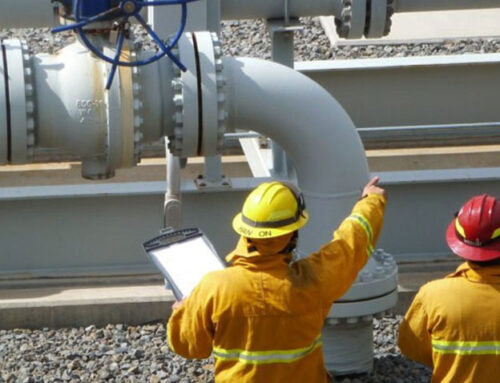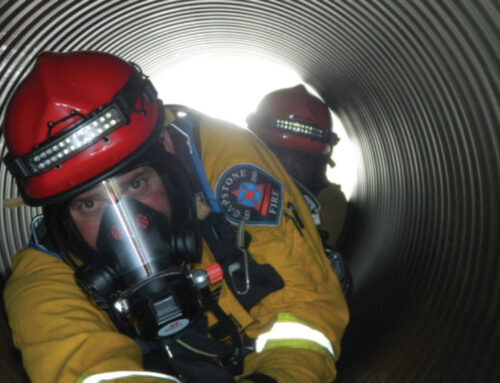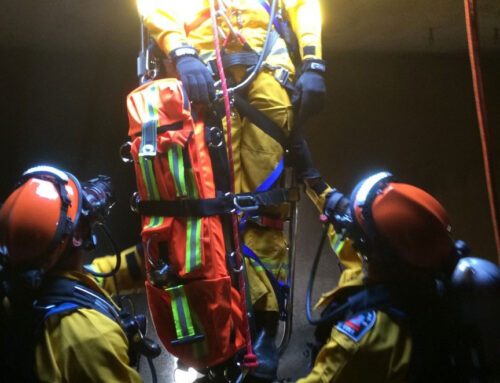Hydrogen sulfide is more than the rotten egg odor that is smelled around propane tanks. It is the bacterial actions breaking down decaying matter, which produces hydrogen sulfide (H2S) and creates the rotten egg smell. However, the truth is that H2S exposure can be deadly for workers in wastewater, mining, agriculture, textile manufacturing, food processing, and oil and gas extraction.
What is H2S and where is it found?
Hydrogen sulfide is a naturally forming gas byproduct of decaying human and animal waste. It is present in crude petroleum and natural gas; it is colorless, flammable and heavier than air, making it incredibly dangerous for exposed workers.
Sulfides are produced throughout a variety of tanks and areas, especially when a tank or piping is down for repair. You will find most sulfides in the following locations:
- Collections system lines
- Lift stations
- Oil and Gas production units
- Manholes
- Plant headworks
- Empty process tanks
- Flow channels
- Digesters
- Dumpsters
- Oxidation ditches
- Cesspools
- Electrical vaults
- Basements
- Rapid infiltration basins (RIBs)
- Confined spaces
Characteristics and health effects
The most widely understood characteristic of hydrogen sulfide gas is the rotten egg smell, which occurs at low concentrations 0.02-0.2 ppm. However, olfactory fatigue — or loss of smell — takes over at 150 to 250 ppm or during continuous exposure to low-level concentrations. Workers must be taught that using their sense of smell to predict H2S danger is not a reliable control mechanism.
Hydrogen sulfide is explosive between the lower explosive limit of 4.3 percent — air is too lean to burn — and the upper explosive limits of 46 percent — air is too rich to burn. However, when mixed with air, the combination can be explosive if an ignition source is present. The vapors and gases from an H2S fire, such as sulfur dioxide, are toxic.
Exposure to H2S has the following health effects depending on the concentration and duration of exposure:
Low concentration
- Eye irritation
- Nose irritation
- Throat irritation
Moderate concentration
- Severe eye and respiratory system effects
- Headache
- Dizziness
- Nausea
- Coughing
- Vomiting
- Difficulty breathing
High concentrations
- Shock to the body
- Convulsions
- Loss of breath
- Coma
- Death within a few breaths over 100 ppm (IDLH condition)
Protection from H2S exposure
Utility and Oil and Gas workers often need to enter confined spaces. When a hazardous condition exists, the space must be entered through a permitting system.
The Permit Required Confined Space (PRCS) is defined as:
- A space where a person can enter
- Limited means of access and egress
- Not meant for continuous human occupancy
- There is a hazard present in the space
The PRCS entry must be a well-organized part of the safety system of the utility for all aspects of the operations. A successful program must have several elements in place for complete worker protection. At a minimum the PRCS program must have:
- Written programs with training:
- Respiratory protection
- Hazard Identification
- Hazard Control
- Lockout/tagout
- Heat stress awareness
2. Proper entry equipment:
- Gas detectors
- Rescue equipment
- Respiratory protection equipment
- Lockout/tagout devices
- Ventilation system
3. Coordination with locally trained professionals trained in confined space rescue
The three control methods for protecting the worker against hydrogen sulfide exposure are:
- Engineering controls
- Ventilation
- Purging and venting of spaces
- Administrative controls
- Training
- Gas detectors
- Job hazard analysis before work
- Hazard evaluation by a competent person
- Warning signs
- Personal protective equipment (PPE)
- Self-contained breathing apparatus (SCBA)
- Goggles
- Respirator masks
H2S is an unavoidable part of some workplaces and areas. However, accidents and fatalities can be prevented. A well-trained staff will have the know-how to protect themselves, but employers still needs proper control mechanisms. Seek to institute engineering controls first, then administrative controls, followed by PPE.
Capstone provides confined space rescue services to support our client’s permit required entries. Contact us to learn more.





